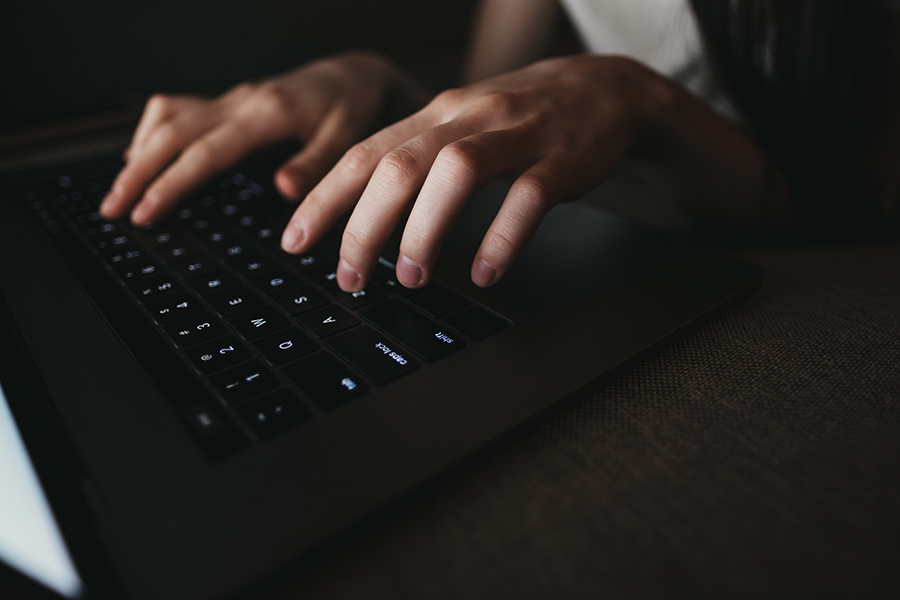“Within the last year we’ve seen it get a lot worse”
Carly Robinson remembers the exact date she first realized her job might be putting her at risk. On Dec. 15, 2018, the reporter for CityNews Edmonton was assigned to cover a protest organized by the yellow vests movement, a vocal right-wing group opposed to the federal government’s carbon tax.
Working by herself, Robinson (Radio and Television – TV ’15) showed up with her video camera and started gathering footage. But when she went to film a confrontation between protestors and counter-protestors, Robinson suddenly had her camera pushed out of the way and was told, “You don’t need to see this.”
Robinson says it was the first time she felt scared while doing her job. “I swore a lot,” she said. “I actually yelled, ‘Freedom of the press!’” As a crowd began to gather around two men who were arguing with one another, she decided to leave out of fear for her own safety.
But the story didn’t end there.
Once the segment aired and the online version was posted to CityNews’ social-media accounts, Robinson received a wave of anonymous online threats for being there and reporting the news. Many were sexual in nature, and some suggested that she would soon be visited at her office or her home. The threats were so unnerving that eventually she decided to file a police report.
“It seemed like an outlier at the time,” Robinson says of the experience now, “but within the last year we’ve seen it get a lot worse.”
Robinson is not alone. Journalists across North America are facing threats to their safety while at work. In that sense, the public’s ability to understand the whole story is also at risk.
Growing public distrust of the media

“Journalists were idolized, and now all of a sudden we’re vilified,” says Chris Durham (Radio and Television Arts ’85), an instructor in NAIT’s Radio and TV program.
“In my time I have never seen this type of backlash. There has always been the odd person who would say, ‘You just distort the facts anyway.’ But now it’s reaching proportions that are unprecedented in recent memory.”
The clearest threats to journalists come in the form of physical intimidation and violence. The U.S. Press Freedom Tracker, which documents instances of infringements upon freedom of the press, found that nearly 150 journalists were assaulted in 2021, most of which were at the hands of law enforcement.
This is an increase of more than 300% compared to just two years earlier.
At the same time, public trust in the media is being destabilized. A 2021 poll indicates that roughly one in three Canadians do not trust traditional news media, with Ipsos describing the declining trend as “significant and widespread.”
One of the most prominent factors contributing to this sudden change in public opinion is President Donald Trump’s targeting of the American news media beginning in 2016. One organization estimates that he used the phrase “fake news” nearly 900 times during his four-year term, a tactic that sowed and legitimized further skepticism amongst the public.
“I’d never had anyone call my organization ‘fake news’ [before Trump],” says Morgan Black (Radio and Television – TV ’14), a digital journalist with Global News. “That was a brand-new term, an oxymoron that shouldn’t make sense.”
Social media has played a role in eroding trust as well, at times amplifying the most extreme corners of public debate and making negativity more visible. It has also been used to attack journalists themselves.
“In my time I have never seen this type of backlash."
A 2022 report published by the Canadian Journalism Forum on Violence and Trauma found that an overwhelming majority of journalists have faced increased online harassment since 2020 – a number that climbs as high as 85% for video journalists like Black and Robinson.
On the ground, where news is being made, there is a new level of anger, largely from right-wing groups over the issues of the day. Robinson notes that the same intimidation tactics she witnessed at the yellow-vests protest are now present at more recent events, such as the “Freedom Convoy” in Ottawa and other protests against public-health measures in the wake of COVID-19.
Robinson also believes the role of the media itself has been obscured and forgotten over time.
“There’s less and less knowledge about the journalistic process,” she says.
“People don’t understand that we’re held to defamation laws and libel laws. You don’t see the code of ethics that each newsroom has. You don’t see the work that’s being put into the journalism, so it’s easy for a bad actor to say that journalism is bad, when the average person doesn’t understand the work that a journalist does in a day.”
This combination of in-person intimidation, online threats, and increasing public distrust take a toll on what is already a difficult profession to cope with mentally. The Canadian Journalism Forum on Violence and Trauma report also found that media workers are at significantly higher risk for anxiety and depression compared to average Canadians, and report patterns of high-risk drinking that are double the national average.
More than half of Canadian media workers report having sought medical help to deal with work-related stress, and 30% have found themselves crying uncontrollably while working on particularly difficult, trauma-related stories.
An adaptive industry for changing times

In response to these challenges, news outlets are taking new measures to better protect their reporters from situations where they might be targeted.
Robinson says that CityNews no longer sends reporters alone to protests, especially on the weekends, when crowds tend to be larger. The company also hires private security guards to accompany reporters.
Whereas news media have traditionally advertised their brands to show that they were active in the community, there is also a new push towards blending in to avoid unwanted negative attention. Robinson says she now goes “incognito” to major rallies and protests, and both CityNews and CTV Edmonton have removed station logos from the outside of their company vehicles.
Journalists are also taking personal steps to lower their exposure to online threats and harassment.
In some cases, Robinson will ask the station to not tag her personal Twitter account in a post about a story. (“If they don’t have a link to click on, it’s a lot harder to find you,” she says.) Black, meanwhile, has decided not to use social media to share details of her personal life; she mostly uses Twitter to share her work and to wish people happy birthday.
Despite these challenges to their profession, journalists and journalism students alike aren’t backing down from doing their jobs. Durham says that NAIT’s program is still oversubscribed, and he doesn’t expect that to change any time soon.
In fact, just as anti-Vietnam protests created a generation of activists in the 1970s, he’s noticed an uptick of journalism students who see themselves as active participants in the battle for freedom of speech around the world.
“If I’m seeing anything,” says Durham, “it’s more young journalists who have passion and their own personal motivation to be make a difference.”
That sense of dedication is critical, he adds, because a free press is as important now as it’s ever been.
“An informed society can only make decisions based on the facts provided to it. It’s absolutely crucial that reporters are able to continue to work independent of any outside interference. Our society is only as strong as our knowledge of each other, and we are the providers of that.”
For Black’s part, it’s precisely that unshakeable belief in the value of her profession that enables her to continue doing her job, even during difficult times.
“I used to think I would get really hurt by [negative backlash],” she says. “But honestly I feel so strongly about the work that I and other journalists are doing that it doesn’t make me feel sad, because I know it’s not true.”
Banner image by garett_mosher/istockphoto.com